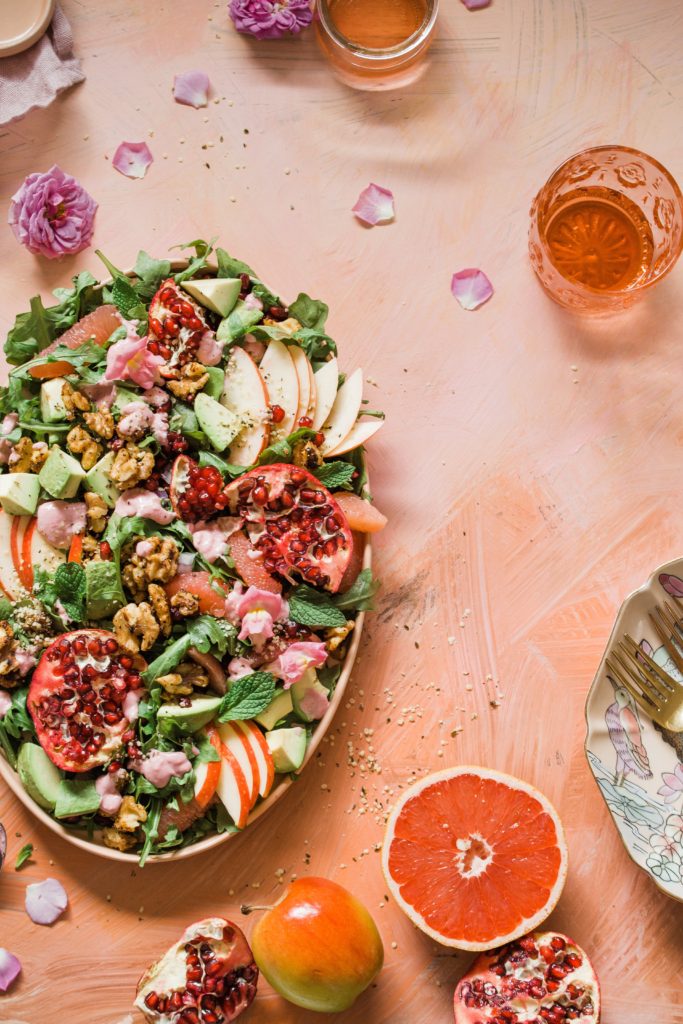When I was in my 20s and 30s, I didn’t pay much attention to the quality of the food I ate. Neither was I worried or knowledgeable about the nutritional components of my meals. To be truthful, I was more concerned whether whatever I put in my mouth would make me fat.
Fast forward a couple of decades; now it’s all about how healthy the food is I choose to eat. Or rather, I prefer to eat only food that is rich in nutrients and discard the type of foods that are not. I personally never eat ultra-processed foods, for example- the kind of foods that are not. Again, balance is key when it comes to diet. For an early 50s woman, a good body is a strong, healthy body; It has nothing to do with size.
This post will focus on educating the readers about healthy habits regarding your diet. After all, you are what you eat (and this is true). What you eat and drink becomes the building blocks for all the cells in your body. Over time, what you choose to eat and drink makes a difference in your health.
When we were younger, worrying about healthy food didn’t matter that much; now, it does, diet and health are intrinsically connected. Choosing healthy foods and drinks regularly can help prevent or manage many health problems.
I will also be giving a list of the foods you should frequently eat to lead a healthy lifestyle. It’s never too late to start taking action on improving your health or modify certain habits that are not helping. The information included in this article is not explicitly intended for weight loss. For weight loss, what is most important is eating healthy carbs and unsaturated fats and limiting the number of calories you take in. Always talk to your doctor if you intend to lose weight to make sure your body is getting all the nutrients it needs.
What does healthy eating mean?
Healthy eating is a way of eating that improves your health and helps prevent disease. It means choosing different types of healthy food from all the food groups (fruits, vegetables, grains, and proteins), most of the time. It also means not eating many foods with added sugars, processed foods, sodium, and saturated and trans fats.
What healthy eating is NOT
Healthy eating is a way of life; it’s not a diet. Eating healthy is not about food restrictions, deprivation, going from one fad diet to another, or eliminating entire food groups. It’s simply making the right choices every day when it comes to food and drink. If you follow this lifestyle, you don’t have to diet again; I can guarantee you that.
You don’t have to spend a lot of money, follow a rigorous diet, or eat only specific types of food. You don’t have to stop eating all of your favorite foods-I eat cheese, chocolate, and nuts every day, and I drink a glass of wine with dinner every day. – It’s all about moderation.
Healthy eating is not getting nutrients from vitamins or other supplements. We are supposed to get most of the needed nutrients primarily from food.
General tips for healthy eating
Think about filling your plate (or at least try) with foods from the five food groups-fruits, vegetables, grains, proteins, and dairy- for every meal. Most of us don’t need calorie counting, food weighing, or special recipes. As a rule, I eat a lot of vegetables and snack on fruit most days. I also cook at home very frequently.
My diet is very high in fiber. Women age 50 and over need 22 grams of fiber every day. Fiber is paramount for women’s health. Not getting enough fiber can lead to constipation and can raise your risk for other health problems. Part of healthy eating is choosing fiber-rich foods, including beans, berries, and dark green leafy vegetables, as frequently as possible. Fiber helps lower your risk for diseases that affect many women, such as heart disease, diabetes, irritable bowel syndrome, and colon cancer. Fiber also helps you feel full, so it can help you reach and maintain a healthy weight.
It’s essential to include enough omega-3 fatty acids in your diet. Eat salmon, tuna, trout, anchovies, or sardines. Other foods high in omega-3 fatty acids are nuts (walnuts), flaxseed, flaxseed oil, soybean oil, and canola oil.
Unique nutritional needs after menopause
According to an article published by Office on Woman’s Health, “Lower levels of estrogen after menopause raise your risk for chronic diseases such as heart disease, stroke, and diabetes, and osteoporosis, a condition that causes your bones to become weak and break easily. What you eat also affects these chronic diseases. Talk to your doctor about healthy eating plans and whether you need more calcium and vitamin D to protect your bones.”
Most women at menopausal age need fewer calories because of less muscle and less physical activity. Of course, women who are more physically active may need more calories.
Women over 50 should target 3 important nutrients:
- Calcium for bone health (osteoporosis).
- Protein for healthy muscle mass.
- Vitamin B-12 for brain function. Found in eggs, milk, lean meats, dish and fortified foods like cereal and grains.
Foods women over 50 (or any women, for that matter) should eat almost every day
- Berries. Rich in antioxidants, vitamin C, vitamin K, fiber, and more.
- Nuts. Particularly walnuts, which increase healthy bacteria in the gut, help with appetite control and help to decrease depression episodes. And almonds, an essential source of protein and vitamin E; almonds also contain about 3.5 grams of fiber per ounce.
- Fatty Fish. Salmon, tuna, sardines. Fish are rich in omega-3 fatty acids called EPA and DHA, which serve in building healthy brain and nerve cells and reduce the risk of heart disease (number 1 killer for women).
- Flaxseed. Excellent source of omega-3 fatty acids, especially for vegetarians and vegans.
- Leafy greens (spinach, kale). These vegetables are an excellent source of various nutrients such as fiber, folate, calcium, magnesium, and vitamins A and K.
- Cruciferous vegetables (broccoli, cauliflower, kale, Brussels sprouts, cabbage). These types of veggies are antioxidant, have high amounts of vitamins, including A, C, and K. Additionally, they have cancer-fighting properties, reduce inflammation, regulate blood sugar, and enhance heart health.
- Avocados. Avocados are high in the good type of fats (monosaturated fats) which helps reducing spikes in blood sugar.
- Dried plums. They provide anti-aging benefits, especially related to strong bones. They help to preserve bone structure and prevent bone loss, reducing the risk of osteoporosis.
Conclusion
Your body changes as you age, so your diet needs to change, too. Healthy eating helps your body and brain get the energy you need to think and be physically active. This lifestyle helps your body get the essential vitamins and minerals you need to stay alive and healthy; your body needs iron to help deliver oxygen to all your muscles and organs. Vitamin C helps your body make new skin cells and collagen. Vitamin A helps you see better at night.
Healthy eating also helps you reach and maintain a healthy weight and lowers your risk of diseases like heart disease and diabetes.
This overall eating pattern is a way of life that does not require skipping meals or certain nutrients. Healthy eating is not limited to certain types of food, like organic, gluten-free, or enriched food. If you are informed and implement the basic rules in your diet, it is easy to follow and maintain.
It’s never too late to improve your overall health. Let’s get inspired!

